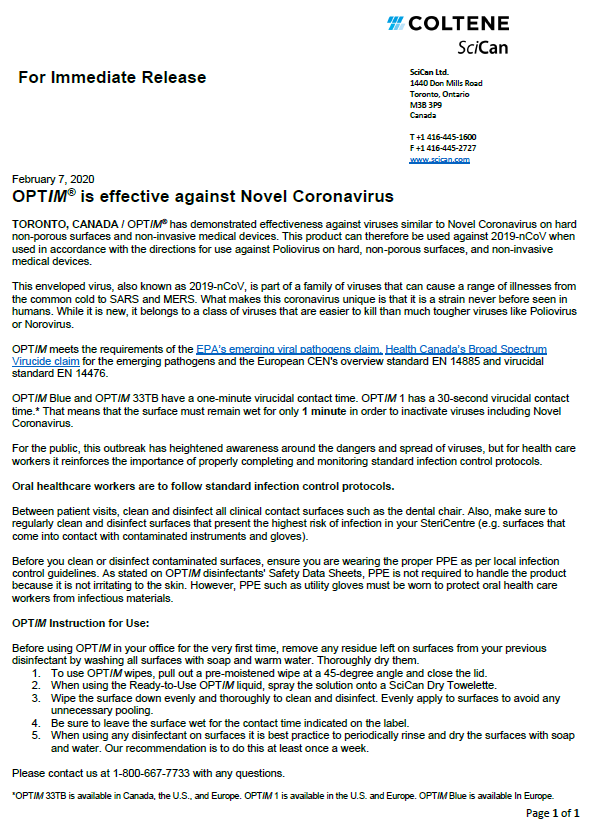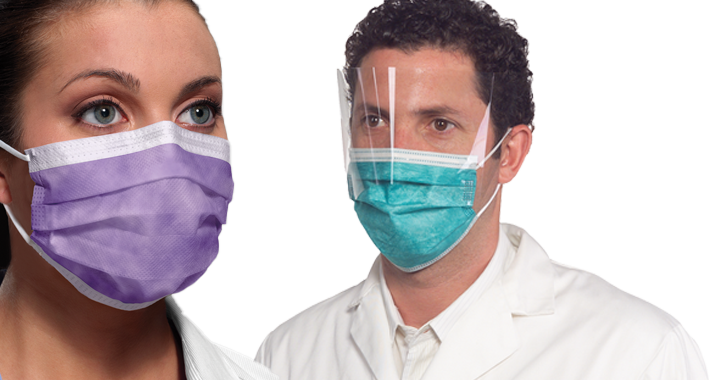Optim - Disinfectant



What is the purpose of a medical face mask ?
In the Operating Room (OR), surgical masks protect the sterile field from possible contamination, primarily as a result of coughing, sneezing or talking. A mask may also protect clinicians from the byproducts of surgical procedures such as bone chips, splashes of body fluids, and smoke plume resulting from laser or electrosurgical techniques.
Outside of the OR masks are used for standard precautions to protect clinicians and patients from pathogens that may spread by blood or other body fluids, secretions or excretions. Surgical and procedure masks are effective against droplet transmission.
How long is my medical face mask effective ?
The filtration efficiency and protective ability of a medical face mask is compromised when the mask becomes wet, torn or dislodged. Generally speaking, the higher protection value of a mask the longer it will maintain filtration; however, there is no set rule for how long a mask should be worn as it depends on humidity levels, respiration rate, nasal discharge, talking, etc. A medical face mask should be worn for only one patient procedure or visit. If a mask gets wet or soiled it should be replaced.
Protection Level :
ASTM Level 1 Mask : Efficiency of bacterial / particle filtration: Light / minimal. Used for general procedures and to adopt a good respiratory label. Designed to resist splashed / spattered blood with venous pressure.
ASTM Level 2 Mask : Efficiency of bacterial / particle filtration: moderate. Better air permeability than high barrier masks. Designed to withstand one of the spilled / spilled blood / fluids with high blood pressure.
ASTM Level 3 Mask : Efficiency of bacterial / particle filtration: High. Higher resistance to liquids. Designed to resist splashed blood / draft. during tasks such as orthopedic operations or in the event of trauma.